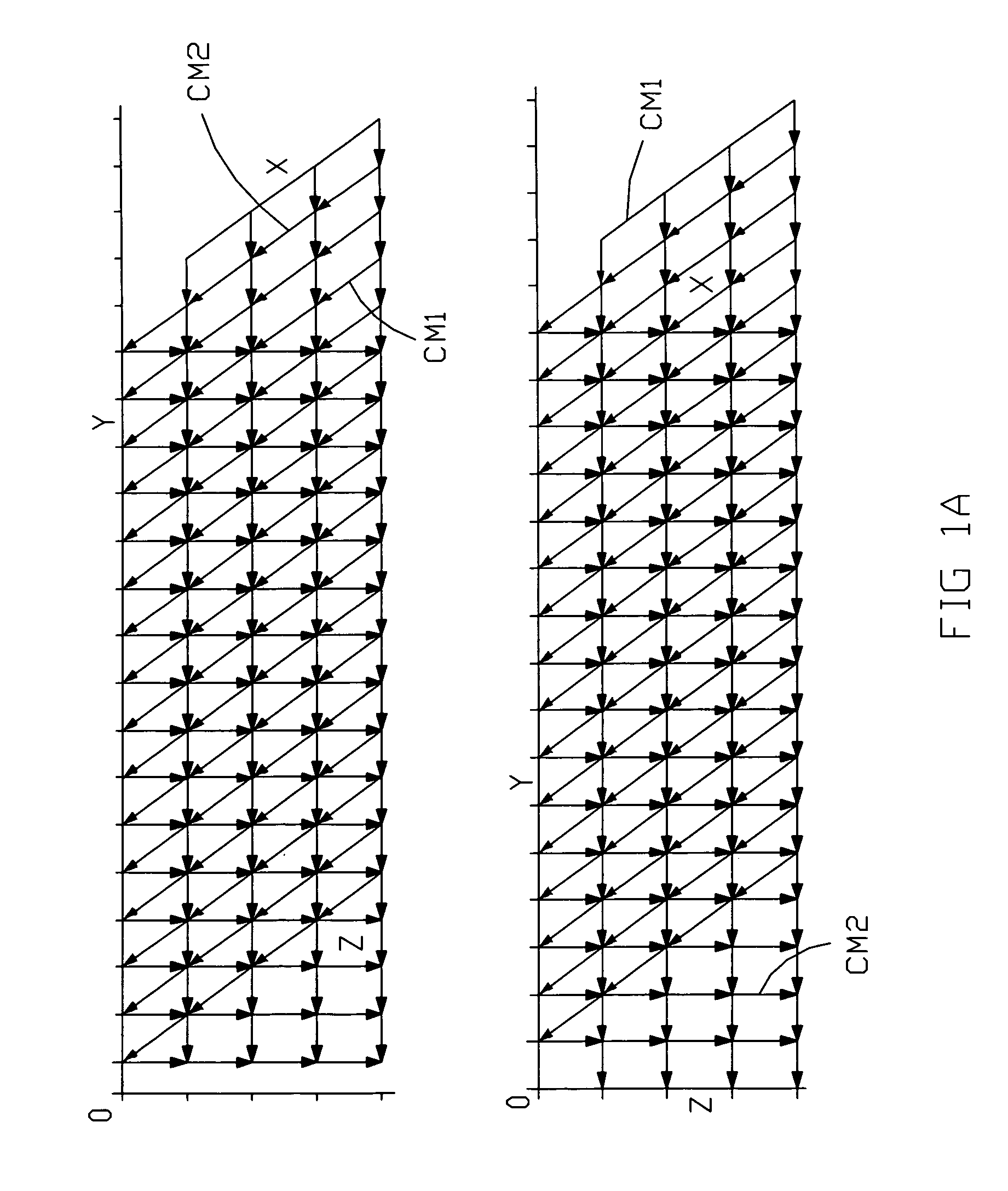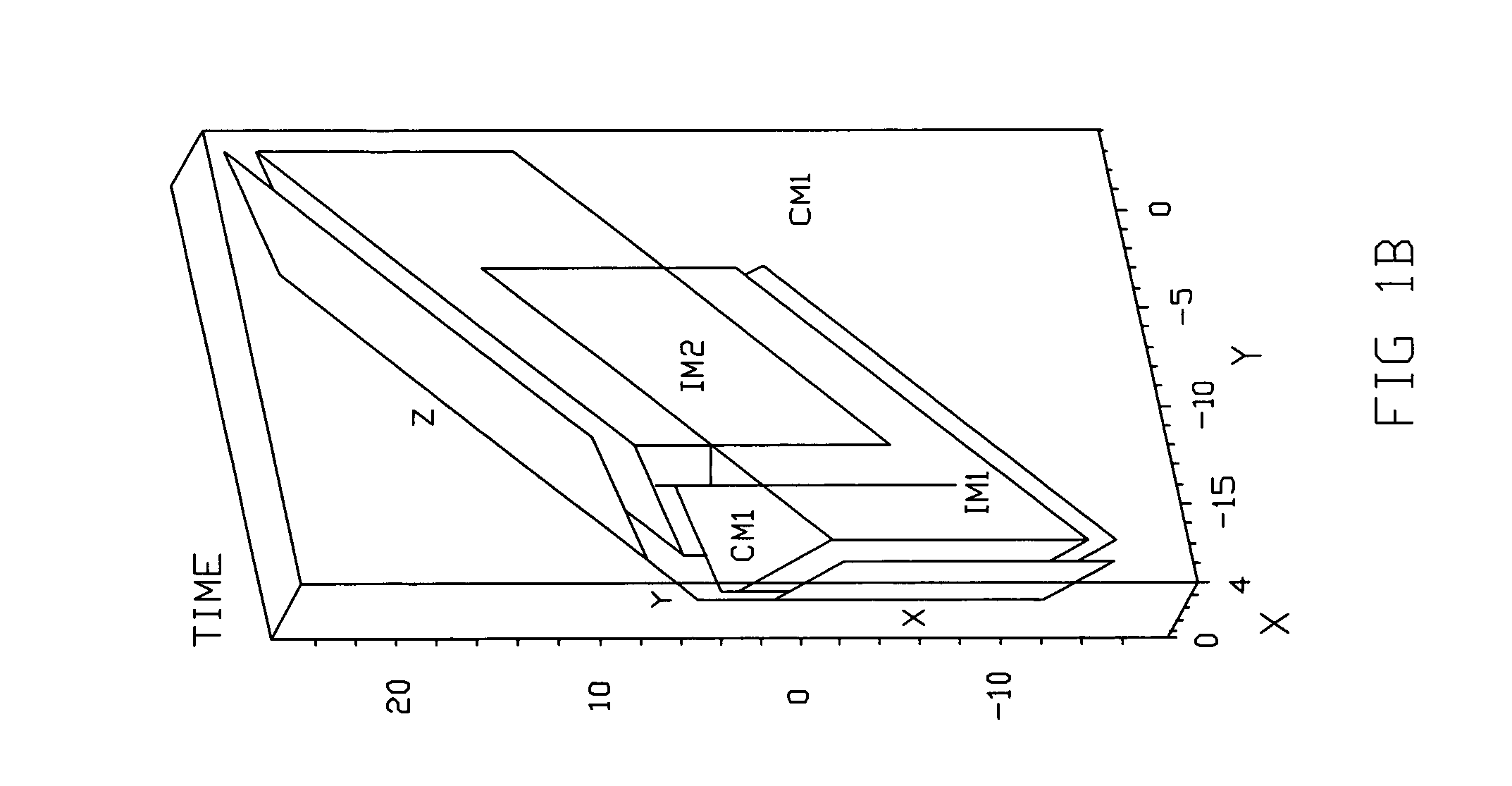Digital systolic array architecture and method for computing the discrete Fourier transform
a digital systolic array and transform technology, applied in the field of systems and methods for computing a discrete fourier transform, can solve the problems of difficult to translate into vlsi hardware, inability to compute dfts with limited choices in the number of transform points, and inability to operate quickly enough for many applications, etc., to achieve high throughput and low latency
- Summary
- Abstract
- Description
- Claims
- Application Information
AI Technical Summary
Benefits of technology
Problems solved by technology
Method used
Image
Examples
Embodiment Construction
The DFT is defined as
[0049]Z[k]=∑n=1NX[n]ⅇ-j(2π / N)(k-1)(n-1)k=1,2…N(1)
where X[n] are the time domain input values and Z[k] are the frequency domain outputs. It is convenient to represent (1) in the matrix terms
Z=CX (2)
where C is a coefficient matrix containing elements WNkn=e−2*j*π*(n−1)*(k−1) / N. In order to transform C into the desired base-b format it is necessary to find a permutation matrix P that reorders X and Z according to
[0050]Xb=4=P[X1X2X3X4X5⋮X13X14X15XN]=[X1X1+N / 4X1+N / 2X1+3N / 4X2⋮XN / 4XN / 2X3N / 4XN],andZb=4=PZ.(3)
With this value of P, C can be transformed into Cb=PCPt, so that Zb=CbXb. This transformation allows Cb to be written as an (N / b)×(N / b) array of b×b blocks, each block C[i,j] specified by
CM[i,j]=WM[i,j]*cD((j−1)mod(b))+1C((i−1)mod(b))+1 (4)
where cDi=citI with ci a b-element vector, Ci is a b×b matrix, each row being cit, and WM[i, j] is an element in the (N / b)×(N / b) matrix,
[0051]WM=[1111⋯1W1W2W3⋯1W2W4W6⋯1W3W6W9⋯⋮⋮⋮⋮⋰].(5)
[0052]With this block...
PUM
 Login to View More
Login to View More Abstract
Description
Claims
Application Information
 Login to View More
Login to View More - R&D
- Intellectual Property
- Life Sciences
- Materials
- Tech Scout
- Unparalleled Data Quality
- Higher Quality Content
- 60% Fewer Hallucinations
Browse by: Latest US Patents, China's latest patents, Technical Efficacy Thesaurus, Application Domain, Technology Topic, Popular Technical Reports.
© 2025 PatSnap. All rights reserved.Legal|Privacy policy|Modern Slavery Act Transparency Statement|Sitemap|About US| Contact US: help@patsnap.com



